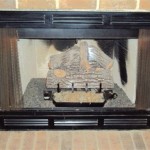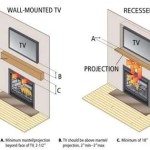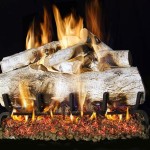Stacked Stone Wood Burning Fireplace: Aesthetics, Functionality, and Installation Considerations
A stacked stone wood burning fireplace represents a significant architectural feature in any home. Combining the rustic charm of natural stone with the warmth and ambiance of a wood-burning fire, these fireplaces offer a unique blend of aesthetic appeal and practical functionality. Understanding the various aspects of stacked stone fireplaces, from design considerations to installation challenges, is crucial for homeowners contemplating this addition.
The term "stacked stone" refers to a construction technique where individual stones are arranged and adhered to create a cohesive, often textured, surface. This method allows for a wide range of design possibilities, as the type of stone, its size, shape, and color, along with the chosen stacking pattern, all contribute to the overall look and feel of the fireplace. The integration of a wood-burning firebox into this stone surround further enhances the fireplace's appeal, providing both a visual focal point and a source of heat.
The popularity of stacked stone fireplaces stems from their ability to complement diverse interior design styles. From traditional and rustic to contemporary and modern, the versatility of stacked stone allows it to be adapted to suit various aesthetic preferences. Furthermore, the use of natural materials appeals to homeowners seeking to incorporate elements of nature into their living spaces. The roaring fire further accentuates the effect making it a very welcoming spot in the house.
Aesthetic Versatility and Design Options
The aesthetic versatility of stacked stone fireplaces is a major draw for homeowners. Numerous options exist regarding stone type, color palette, and stacking patterns. Each choice dramatically influences the final appearance of the fireplace.
Common stone types used in stacked stone fireplaces include:
- Ledgestone: Characterized by thin, linear stones stacked horizontally, creating a streamlined and modern look.
- River Rock: Rounded stones of varying sizes and colors, lending a natural and organic feel.
- Fieldstone: Irregularly shaped stones with a more rustic and rugged appearance.
- Quartzite: A durable and visually appealing stone with a shimmering quality.
- Slate: A fine-grained, foliated metamorphic rock known for its durability and unique colors.
The color palette of the stone also plays a crucial role in the overall design. Neutral tones like grays, browns, and tans offer a timeless and adaptable look, while bolder colors, such as blues, reds, or greens, can create a more dramatic and eye-catching statement. The choice of grout color, or the decision to use a dry-stacking technique (without visible grout), further impacts the fireplace's aesthetic.
Stacking patterns can also be customized to achieve different visual effects. A tight, regular stack creates a clean and organized look, while a looser, more random stack emphasizes the natural variation of the stones. The size and shape of the individual stones, as well as the overall dimensions of the fireplace, can be adjusted to fit the specific proportions of the room.
Beyond the stone itself, incorporating design elements such as a mantel, hearth, or built-in shelving can further enhance the fireplace's aesthetic appeal and functionality. A wooden mantel adds warmth and character, while a stone hearth provides a practical and visually appealing base for the firebox. Built-in shelving offers storage space for firewood, books, or decorative items.
Functional Considerations and Performance
Beyond its aesthetic appeal, a stacked stone wood burning fireplace offers functional benefits, primarily as a source of supplemental heat. However, it is important to understand the performance characteristics of these fireplaces to ensure efficient and safe operation.
The heat output of a wood-burning fireplace is influenced by several factors, including the size of the firebox, the type and amount of wood burned, and the efficiency of the chimney. Modern wood-burning fireplaces often incorporate features such as insulated fireboxes, airtight doors, and catalytic combustors to improve their efficiency and reduce emissions. These features help to maximize heat output while minimizing pollution.
Proper ventilation is crucial for the safe and efficient operation of a wood-burning fireplace. The chimney must be properly sized and constructed to ensure adequate draft, which draws smoke and gases out of the firebox and away from the living space. Regular chimney cleaning and inspection are essential to prevent creosote buildup, which can pose a fire hazard.
The design and construction of the firebox itself are also important functional considerations. The firebox must be constructed of heat-resistant materials, such as firebrick or cast iron, to withstand the high temperatures generated by the fire. The size and shape of the firebox should be appropriate for the size of the room and the desired heat output. A well-designed firebox will promote efficient combustion and minimize the amount of smoke and ash produced.
The type of wood burned in the fireplace also significantly affects its performance. Hardwoods, such as oak, maple, and ash, burn longer and produce more heat than softwoods, such as pine and fir. Seasoned wood, which has been properly dried, burns more efficiently and produces less smoke than green wood. It is important to choose the right type of wood for the fireplace and to store it properly to ensure optimal performance.
Installation Challenges and Safety Regulations
Installing a stacked stone wood-burning fireplace is a complex undertaking that requires careful planning and execution. It involves structural modifications, masonry work, plumbing (for gas-assisted lighting), and adherence to strict safety regulations. Therefore, it is generally recommended to hire qualified professionals for the installation process.
The structural integrity of the existing building must be assessed to ensure it can support the weight of the stacked stone fireplace. In some cases, reinforcement of the foundation or floor may be necessary. The location of the fireplace should be carefully considered, taking into account factors such as proximity to combustible materials, access to a chimney, and the overall layout of the room.
The construction of the chimney is a critical aspect of the installation process. The chimney must be properly sized and constructed to ensure adequate draft and to prevent backdrafting of smoke and gases into the living space. The chimney should be built of non-combustible materials, such as brick, block, or stainless steel, and should be properly insulated to prevent heat loss and condensation.
The installation of the firebox must comply with local building codes and safety regulations. The firebox should be properly installed and sealed to prevent air leaks and to ensure efficient combustion. The connection between the firebox and the chimney must be airtight to prevent smoke and gases from escaping into the room.
Safety regulations regarding clearances from combustible materials must be strictly followed. The fireplace should be located at a safe distance from walls, ceilings, and other combustible materials. Heat shields may be required to protect nearby surfaces from excessive heat. Fire extinguishers and smoke detectors should be installed in the vicinity of the fireplace for added safety.
Proper ventilation is essential to prevent carbon monoxide poisoning. Carbon monoxide is a colorless, odorless gas that is produced by the incomplete combustion of wood. It can be deadly if inhaled in high concentrations. A carbon monoxide detector should be installed near the fireplace to alert occupants to the presence of this dangerous gas.
The installation process can be disruptive and time-consuming, requiring careful coordination between various tradespeople. It is important to choose experienced and reputable contractors who are familiar with the specific requirements of stacked stone wood-burning fireplace installations. Thorough planning and communication are essential to ensure a successful and safe installation.
Maintenance is another important aspect of owning a stacked stone wood-burning fireplace. Regular cleaning of the firebox and chimney is necessary to prevent creosote buildup and to ensure efficient operation. The stone surround should be cleaned periodically to remove dust and soot. Any cracks or damage to the stone or grout should be repaired promptly to prevent further deterioration. Proper maintenance will help to extend the lifespan of the fireplace and to ensure its continued safe and efficient operation.
The cost of a stacked stone wood-burning fireplace can vary widely depending on the size and complexity of the project, the type of stone used, and the labor costs in the area. It is important to obtain multiple quotes from different contractors to compare prices and to ensure that all necessary work is included in the estimate. While the initial investment can be significant, a well-designed and properly installed stacked stone wood-burning fireplace can add considerable value to a home and provide years of enjoyment.

Natural Stacked Stone Veneer Fireplace Ideas

Natural Stacked Stone Veneer Fireplace Ideas

Natural Stacked Stone Veneer Fireplace Ideas

4 Natural Stacked Stone Fireplaces For Your Dream Design

How To Build An Outdoor Stacked Stone Fireplace

Is A Cozy Stacked Stone Fireplace Your Next Dream Project

12 Stacked Stone Fireplace Ideas For Optimal Coziness

Wood Stove And Stacked Stone Cabin Fireplace Burning Stoves Living Room

Large Stacked Stone Fireplace With Wood Mantle And Hearth Traditional Family Room Providence By Eldorado Houzz

12 Stacked Stone Fireplace Ideas For Optimal Coziness
Related Posts








